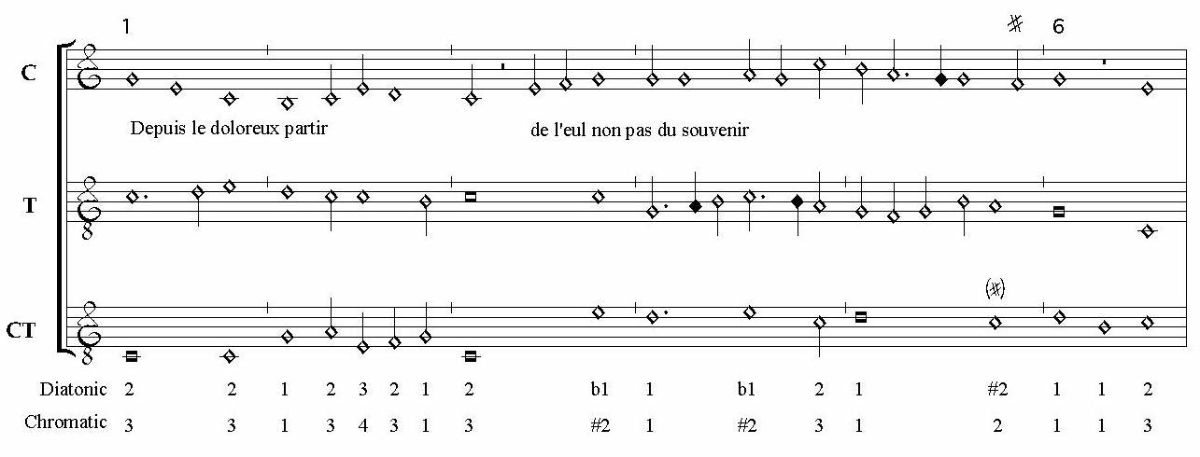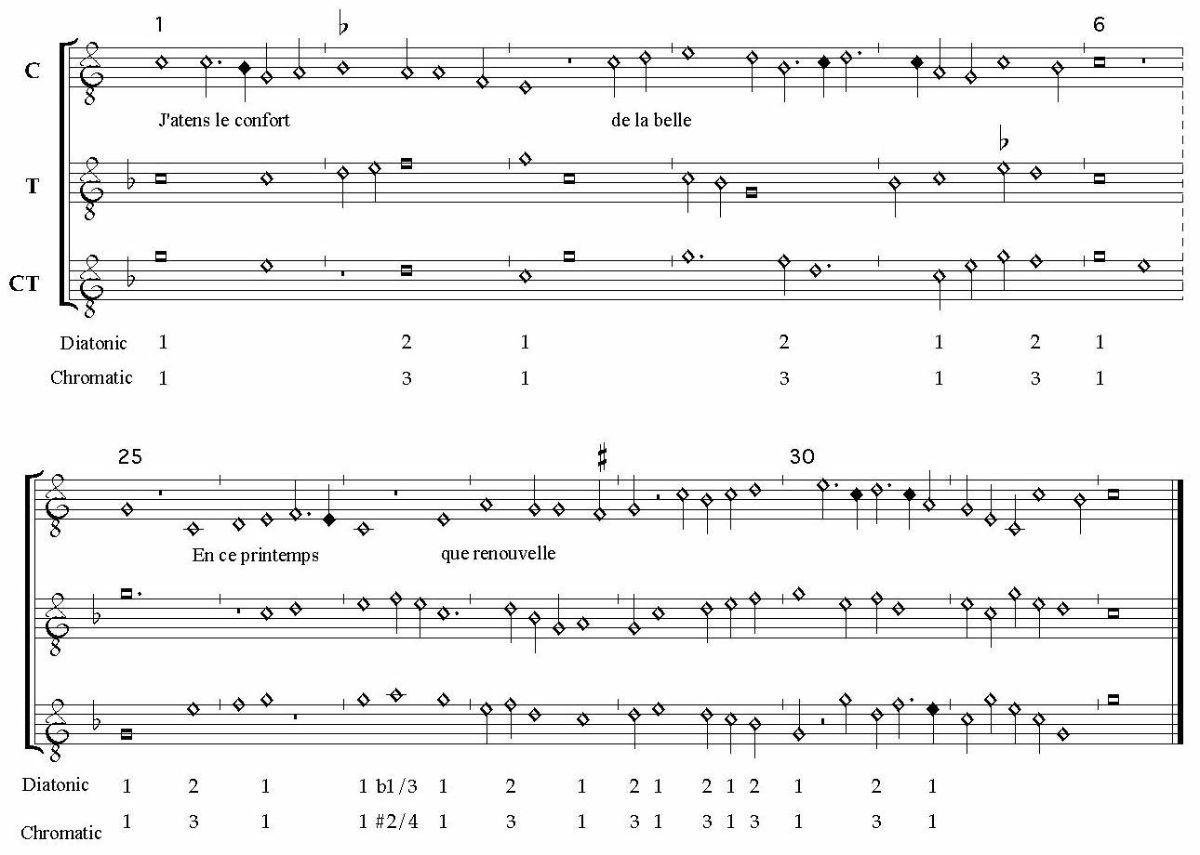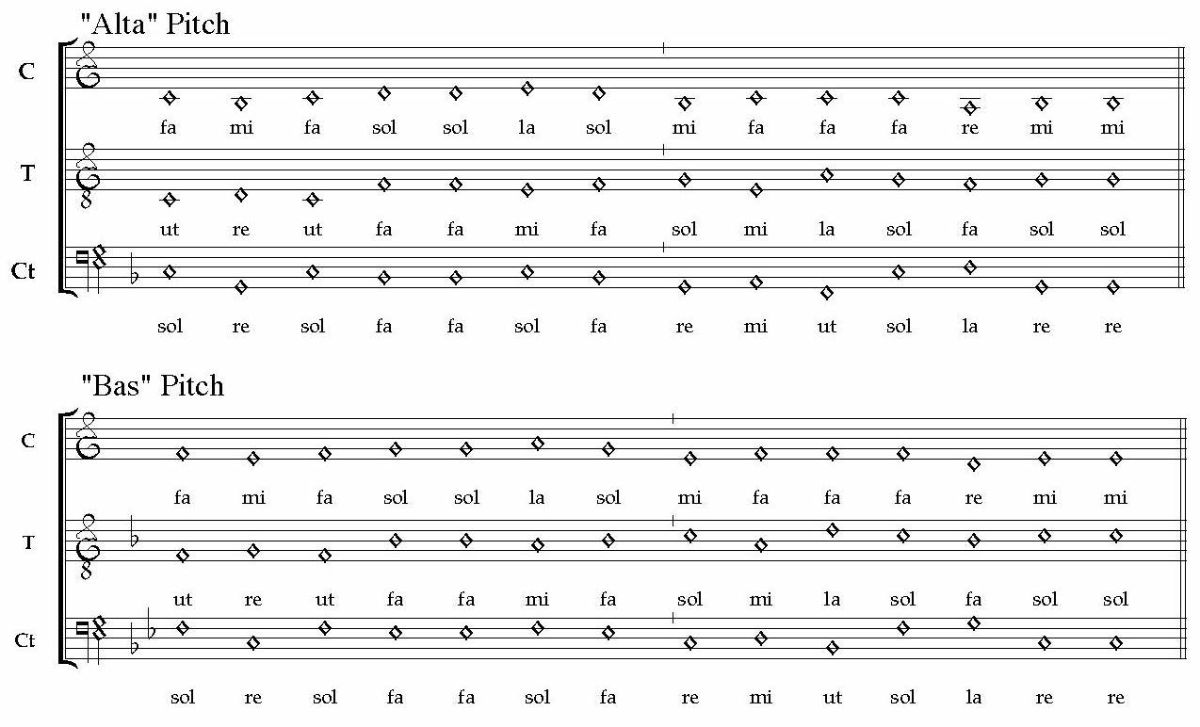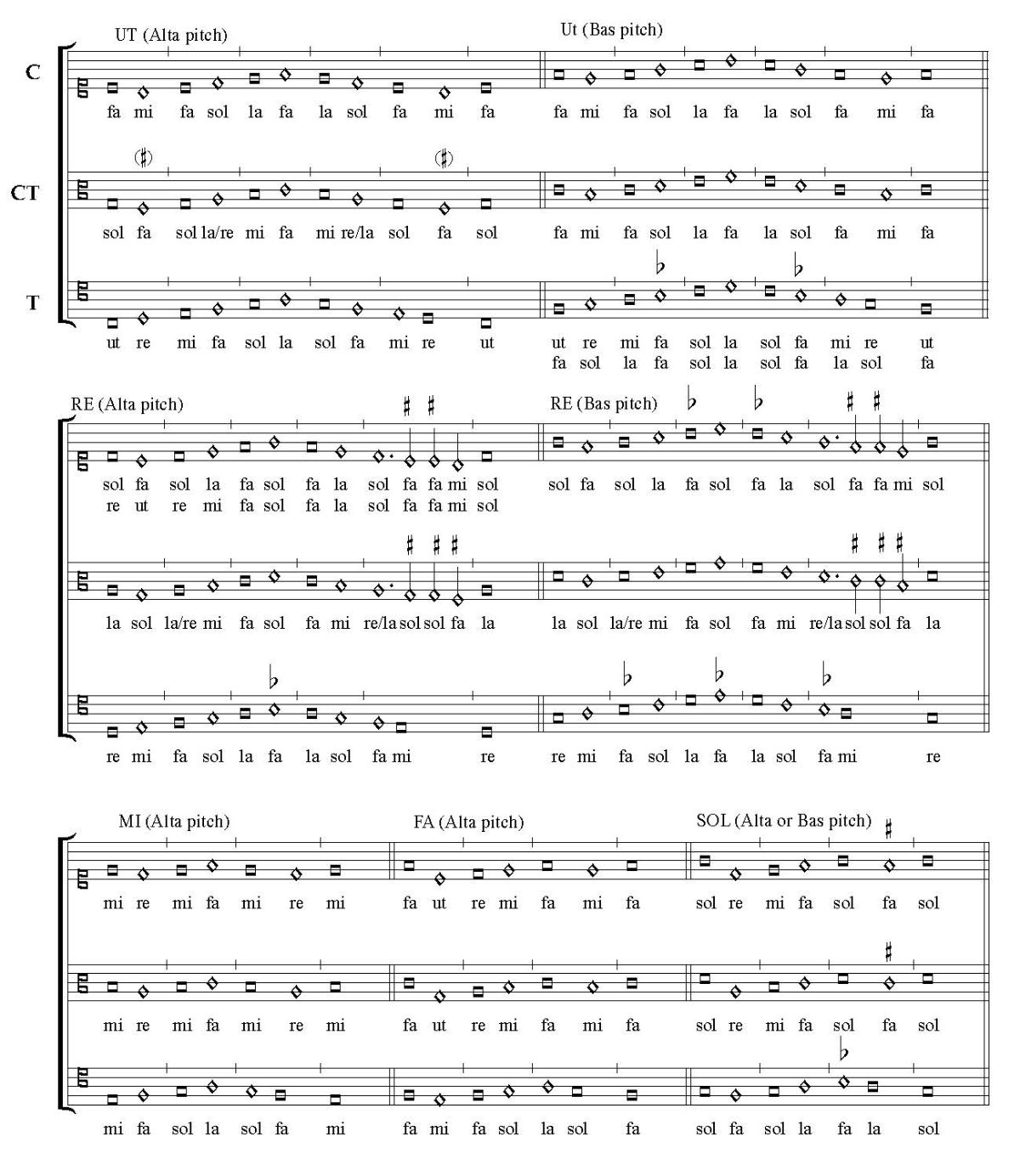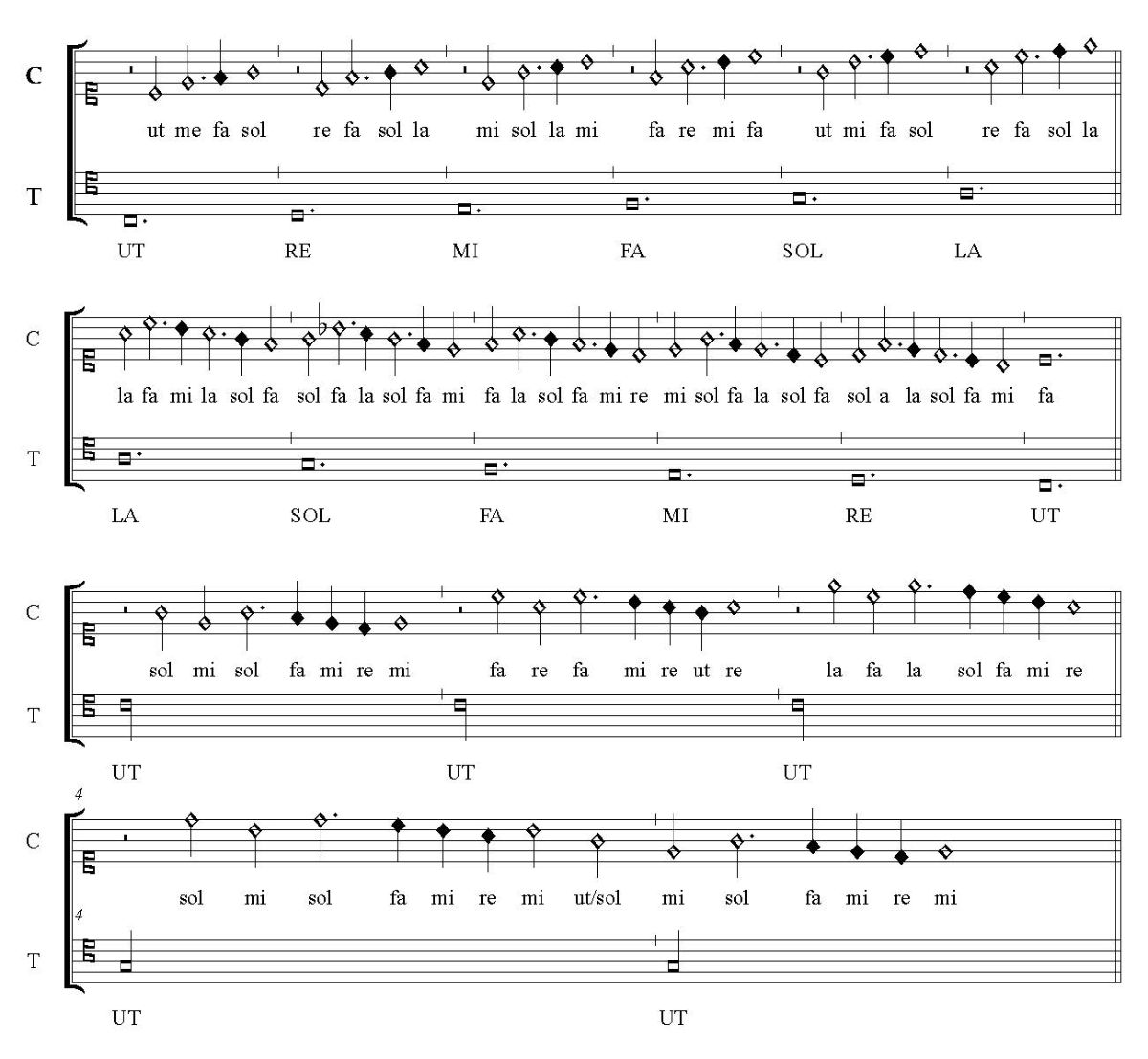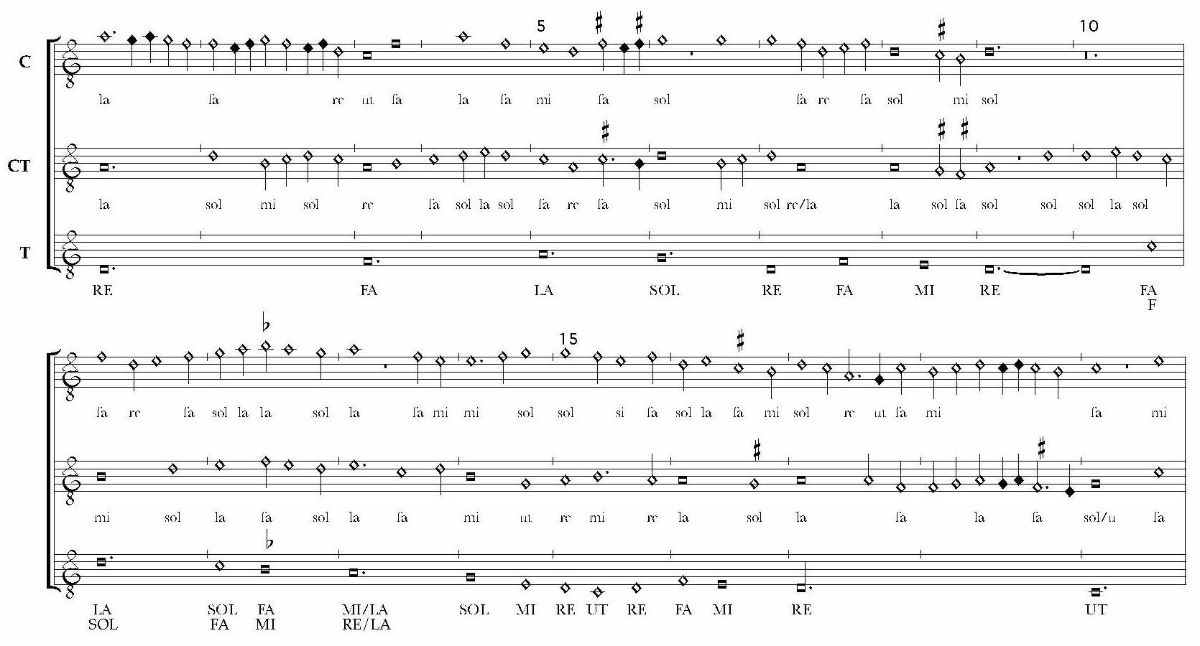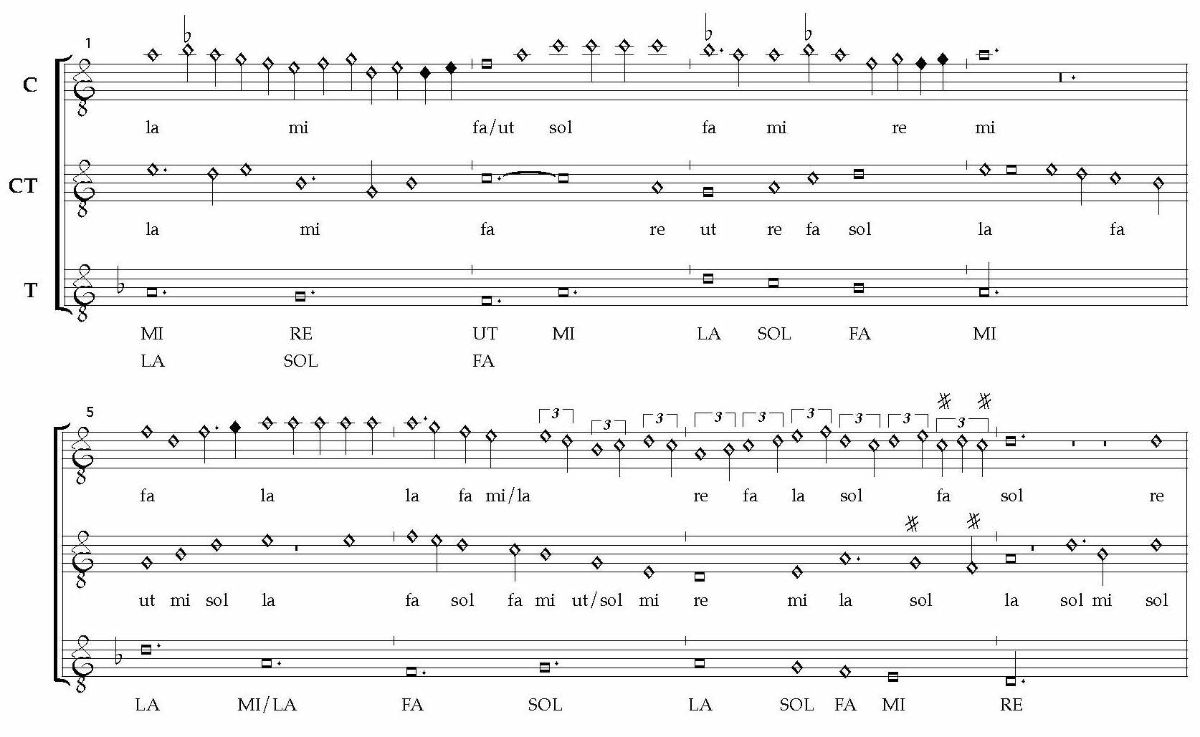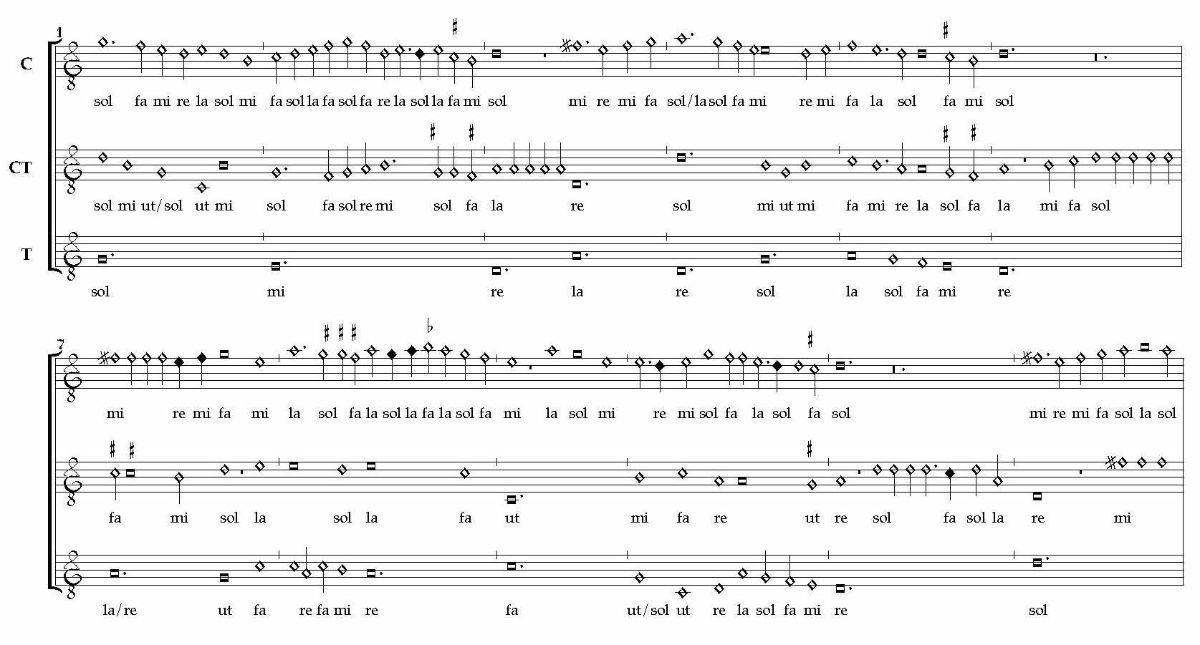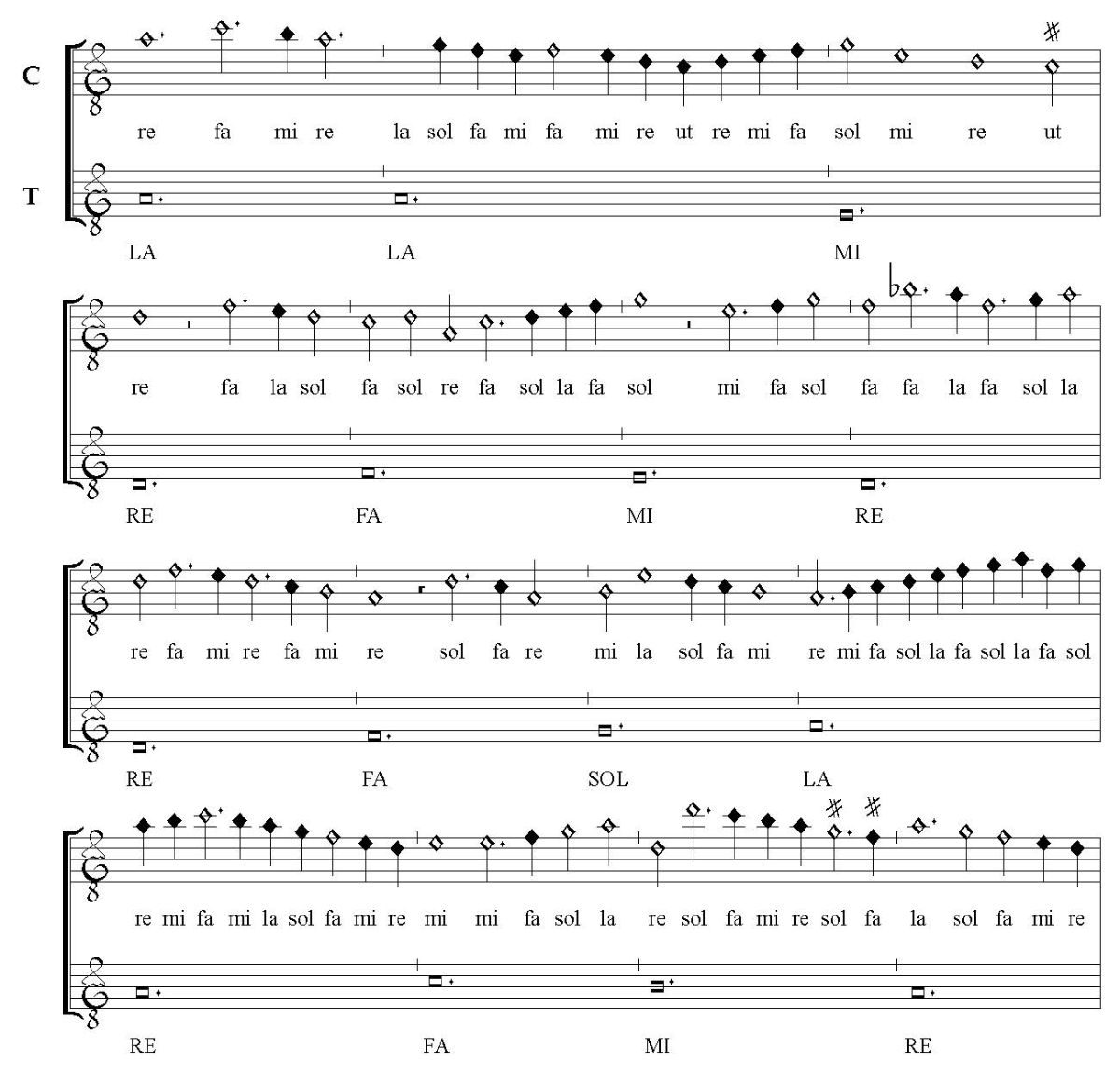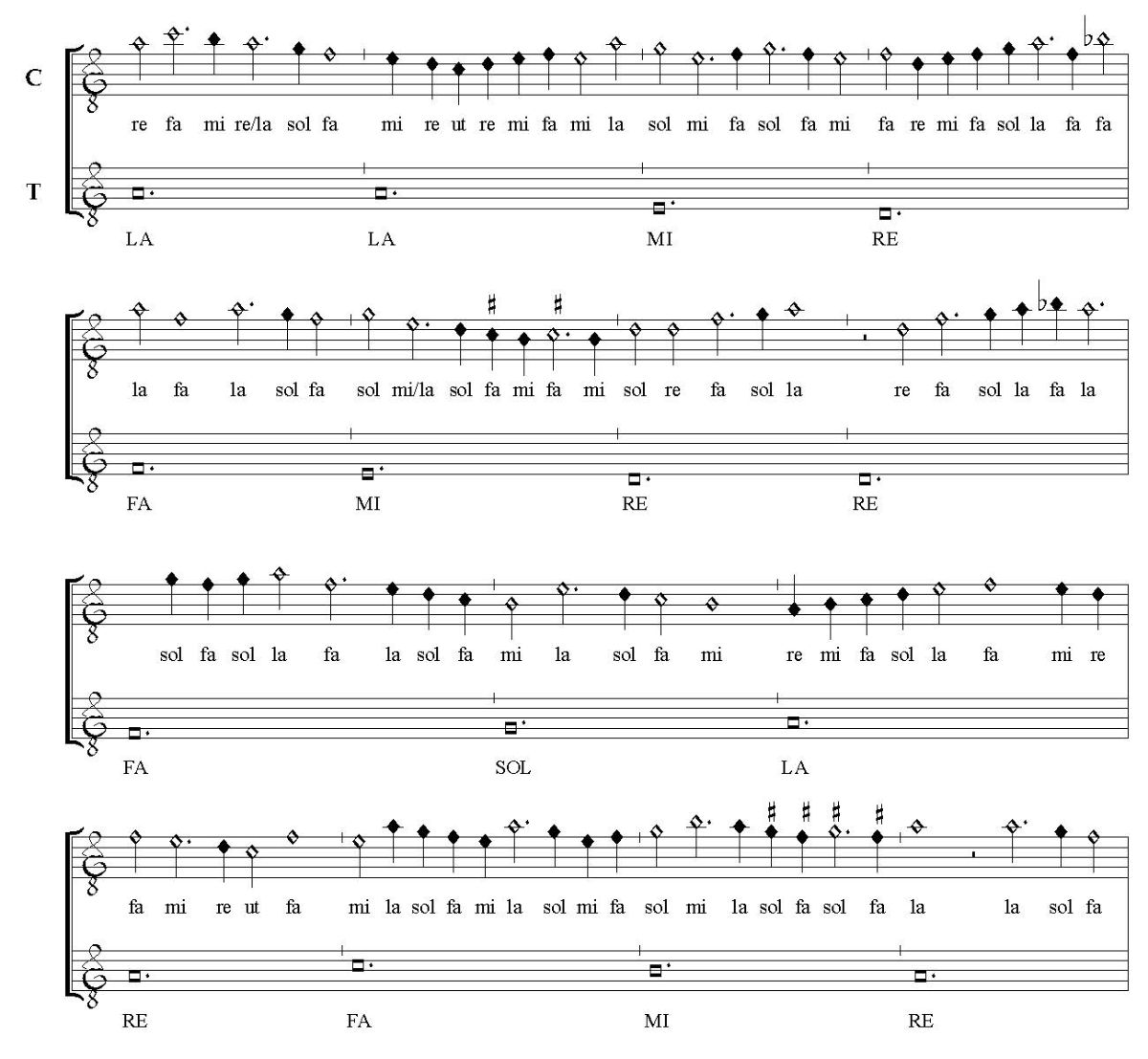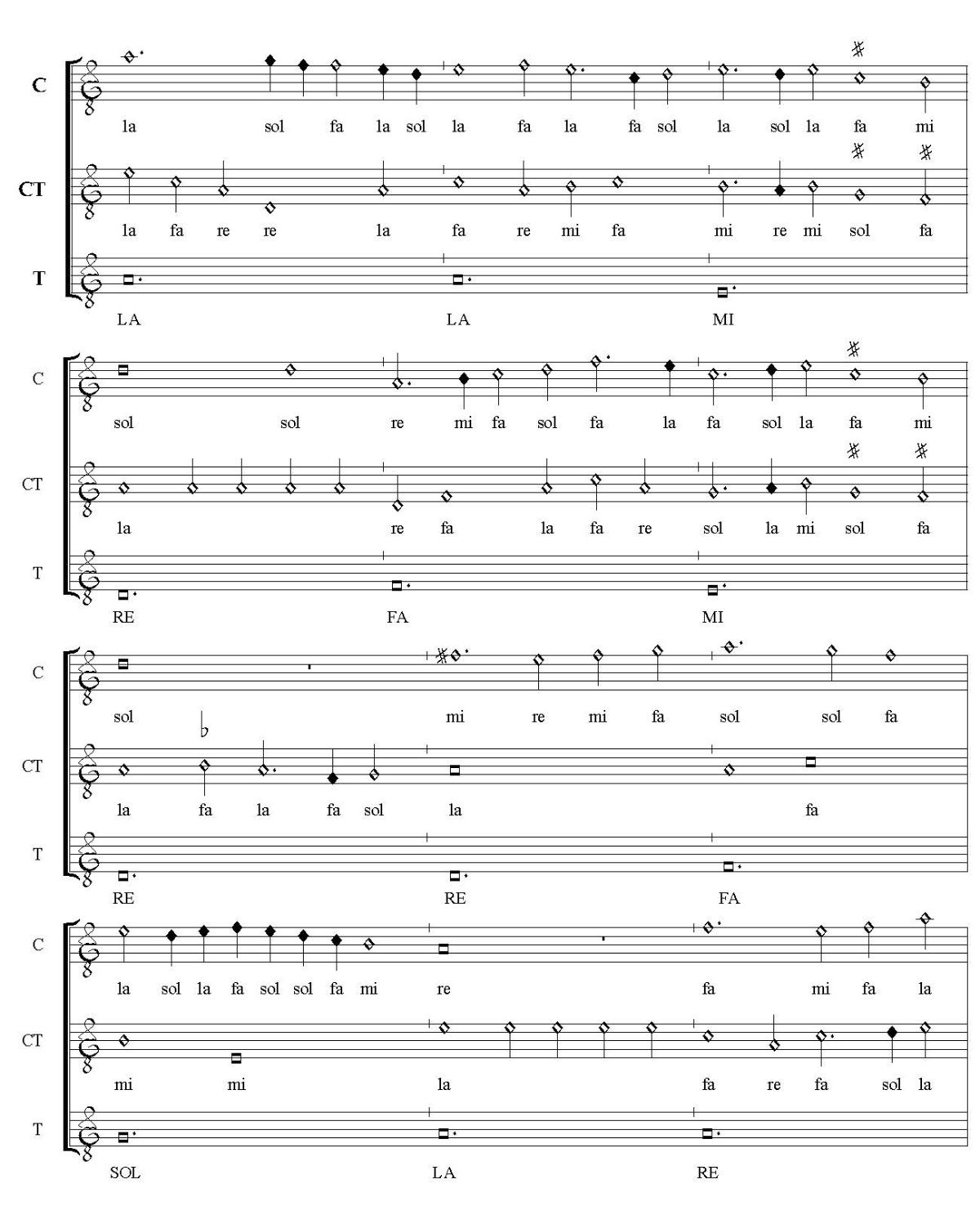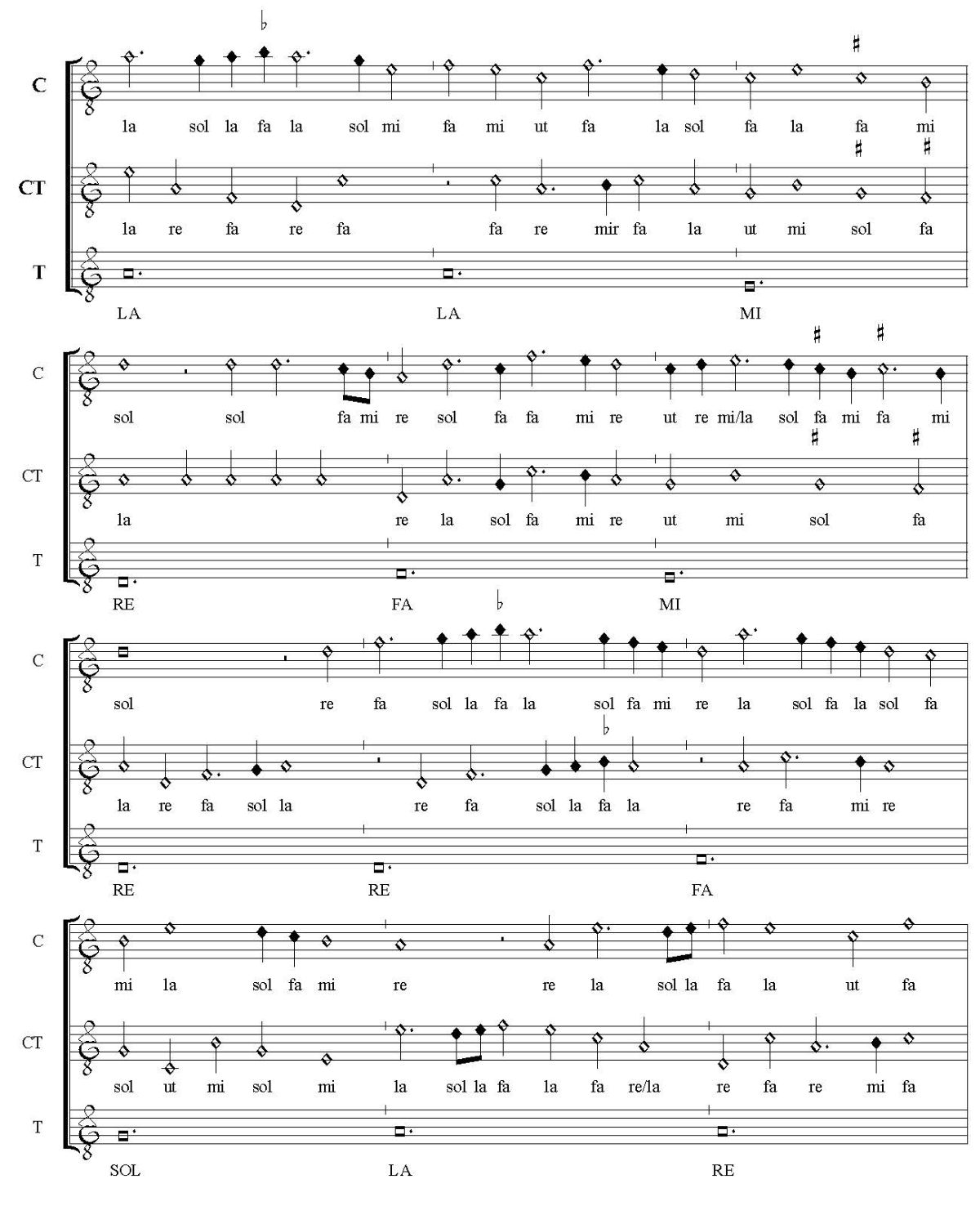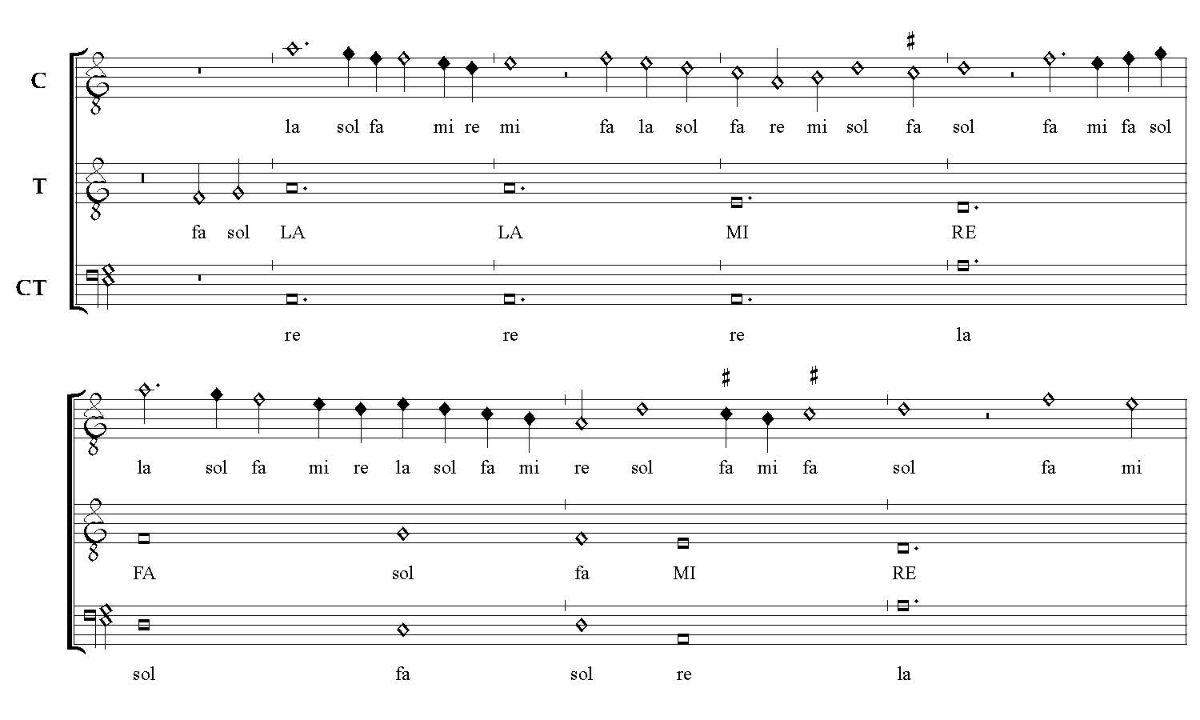[Agricola 1529]
Martin Agricola, Musica instrumentalis deudsch, Wittenberg: Georg Rhaw 1529.
[Allaire 1972]
Gaston Allaire, The Theory of Hexachords, Solmization, and the Modal System: A Practical Application, [Dallas]: American Institute of Musicology 1972.
[Baines 1950]
Anthony Baines, “Fifteenth-Century Instruments in Tinctoris’s De inventione et usu musicae”, in: Galpin Society Journal 3 (1950), 19–26.
[Banks 2006]
Jon Banks, The Instrumental Consort Repertory of the Late Fifteenth Century, Aldershot: Ashgate Publishing 2006.
[Baroncini 2002]
Rodolfo Baroncini, “Zorzi Trombetta and the Band of Piffari and Trombones of the Serenissima: New Documentary Evidence”, in: Historic Brass Society Journal 14 (2002), 59–82.
[Bent 2007]
Margaret Bent, “Trombetta and Concordans Parts in the Early Fifteenth Century”, in: Music as Social and Cultural Practice: Essays in Honour of Reinhard Strohm, Woodbridge: Boydell 2007, 38–73.
[Berentsen 2016]
Niels Berentsen, Discantare Super Planum Cantum: new approaches to vocal polyphonic improvisation 1300–1470, PhD dissertaion, Leiden: University of Leiden 2016.
[Bonda 1994]
Jan Willem Bonda, “Tandernaken, Between Bruges and Ferrara”, in: From Ciconia to Sweelinck: donum natalicum Willem Elders, eds. Albert Clement and Eric Jaas, Amsterdam: Rodopi 1994, 49–74.
[Canguilhem 2015]
Philippe Canguilhem, L’improvisation polyphonique à la Renaissance, Paris: Classiques Garnier 2015.
[Coelho and Polk 2016]
Victor Coelho and Keith Polk, Instrumentalists and Renaissance Culture, 1420–1600, Cambridge: Cambridge University Press 2016.
[Crane 1968]
Frederick Crane, Materials for the Study of the Fifteenth-Century Basse Danse, Brooklyn: Institute of Mediaeval Music 1968.
[D’Accone 1997]
Frank A. D’Accone, The Civic Muse: Music and Musicians in Siena during the Middle Ages and the Renaissance, Chicago: University of Chicago Press 1997.
[Downey 1984]
Peter Downey, “The Renaissance Slide Trumpet: Fact or Fiction?”, in: Early Music 12/1 (1984), 26–33.
[Duffin 1989]
Ross W. Duffin, “The ‘trompette des menestrels’ in the 15th-century ‘alta capella’”, in: Early Music 17/3 (1989), 397–402.
[Duffin 2008]
Ross W. Duffin, How Equal Temperament Ruined Harmony (and Why You Should Care), New York: Norton 2008.
[Duffin 2013]
Ross W. Duffin, “Ensemble Improvisation in the Fifteenth-Century Mensural Dance Repertoire”, in: Instruments, Ensembles, and Repertory, 1300-1600: Essays in Honour of Keith Polk, eds. Stewart Carter and Timothy McGee, Turnhout: Brepols 2013, 195–233.
[Fallows 1999]
David Fallows, A Catalogue of Polyphonic Songs, 1415–1480, Oxford, New York: Oxford University Press 1999.
[Fiorentino 2017]
Giuseppe Fiorentino, “Contrapunto and Fabordón: Practices of Extempore Polyphony in Renaissance Spain”, in: Studies in Historical Improvisation: from ‘Cantare super Librum’ to Partimenti, ed. Massimiliano Guido, London, New York: Routledge 2017, 72–89.
[Ganassi 1535]
Silvestro Ganassi, Opera intitulata Fontegara, Venice 1535.
[Gerber, Finscher and Dömling 1975]
Rudolf Gerber, Ludwig Finscher and Wolfgang Dömling (eds.), Der Mensuralkodex des Nikolaus Apel: Ms. 1494 der Universitatsbibliothek Leipzig, Teil 3, Kassel: Bärenreiter 1975.
[Gilbert 2003]
Adam Knight Gilbert, Elaboration in Heinrich Isaac’s Three-Voice Mass Sections and Untexted Compositions, PhD diss., Case Western Reserve University 2003.
[Gilbert 2005]
Adam Gilbert, “The Improvising Alta capella, ca. 1500: Paradigms and Procedures”, in: Basler Jahrbuch für Historische Musikpraxis 29 (2005), 109–123.
[Gilbert 2013]
Adam Gilbert, “Reverse Engineering Fifteenth-Century Counterpoint: ‘Es solt ein man kein mole farn and Cançon de pifari dco. el Ferrarese’”, in: Instruments, Ensembles, and Repertory, 1300–1600, eds. Stewart Carter and Timothy McGee, Turnhout: Brepols Pub 2013, 173–194.
[Gilbert 2019]
Adam Knight Gilbert, “Iuxta artem conficiendi: Solmization and Counterpoint ca. 1500”, in: Historical Performance 2 (2019), 25–54.
[Gilbert 2020]
Adam Knight Gilbert, “The Makers of Dreams: Instrument Builders,” in: EMAg (Early Music America Magazine) 26/1 (2020), 10–15.
[Gülke 1967]
Peter Gülke (ed.), Johannis Pullois: Opera omnia, Neuhausen-Stuttgart: American Institute of Musicology 1967 (Corpus mensurabilis musicae 41).
[Guido 2017]
Massimiliano Guido (ed.), Studies in Historical Improvisation: from ‘Cantare super Librum’ to Partimenti, London, New York: Routledge 2017.
[Heinzelmann 2012]
Sigrun Heinzelmann, “John Hothby as Innovator: The Solmization System in ‘la Calliopea Legale’”, in: Studi Musicali, nuova serie, 3 (2012), 353–396
[Haymoz 2017]
Jean-Yves Haymoz, “Discovering the Practice of Improvised Counterpoint”, in: Studies in Historical Improvisation: from ‘Cantare super Librum’ to Partimenti, ed. Massimiliano Guido, London, New York: Routledge 2017, 90–112.
[Klaus 2013]
Sabine Klaus, Trumpets and Other High Brass, Vermillion: National Music Museum 2013.
[Leech-Wilkinson and Durante 1981]
Daniel Leech-Wilkinson and Sergio Durante, “Il libro di appunti di un suonatore di tromba del quindicesimo secolo”, in: Rivista Italiana di Musicologia 16/1 (1981), 16–39.
[Lockwood 1984]
Lewis Lockwood, Music in Renaissance Ferrara, 1400-1505: The Creation of a Musical Center in the Fifteenth Century, Cambridge: Harvard University Press 1984.
[McGee 1999]
Timothy McGee, “Dinner Music for the Florentine Signoria, 1350–1450,” in: Speculum 74/1 (1999), 95–114.
[McGee 2009]
Timothy McGee, The Ceremonial Musicians of Late Medieval Florence, Bloomington: Indiana University Press 2009.
[McGowan 1996]
Keith McGowan, “A Chance Encounter with a Unicorn? A Possible Sighting of the Renaissance Slide Trumpet”, in: Historic Brass Society Journal 8 (1996), 90–101.
[Mengozzi 2010]
Stefano Mengozzi, The Renaissance Reform of Medieval Music Theory: Guido of Arezzo between Myth and History, Cambridge: Cambridge University Press 2010.
[Meyer 1997]
Christian Meyer, Anonymi tractatus de cantu figurativo et de contrapuncto (c. 1430-1520), Neuhausen: American Institute of Musicology, Hänssler Verlag 1997.
[Montellier 1939]
Ernest Montellier, “Quatorze chansons du XVe siècle extraites des archives namuroises”, in: Annuaire de la commission de la vieille chanson populaire, Antwerp 1939, 153–211.
[Myers 1989]
Herbert W. Myers, “Slide Trumpet Madness: Fact or Fiction?” in” Early Music 17 (1989), 383-389.
[Myers 2020]
Herbert W. Myers, “The Rise of the “Family Principle” of Instrument Building,” in: Groß Geigen um 1500. Orazio Michi und die Harfe um 1600, ed. Martina Papiro, Basel: Schwabe Verlag 2019 (Basler Beiträge zur Historischen Musikpraxis 39), 125–145.
[Neumeier 2015]
Barbara Neumeier, Der Pommer: Bauweise, Kontext, Repertoire, Sinzig: Studio Verlag 2015.
[Polk 1968]
Keith Polk, Flemish Wind Bands in the Late Middle Ages: A Study of Improvisatory Instrumental Practices, PhD diss., University of California, Berkeley 1968.
[Polk 1989]
Keith Polk, “The Trombone, the Slide Trumpet and the Ensemble Tradition of the Early Renaissance”, in: Early Music 17/3 (1989), 389–397.
[Polk 1992]
Keith Polk, German Instrumental Music of the Late Middle Ages: Players, Patrons, and Performance Practice, Cambridge, New York: Cambridge University Press 1992.
[Polk 1997]
Keith Polk, “The Invention of the Slide Principle and the Earliest Trombone or, the Birth of a Notion”, in: Perspectives in Brass Scholarship: Proceedings of the International Historic Brass Symposium, Amherst, 1995, ed. Stewart Carter, Stuyvesant: Pendragon Press 1997, 19–27.
[Polk 2018]
Keith Polk, “Trumpets, Shawms, and the Early Slide Instruments, ca. 1350–1470”, in: Historic Brass Society Journal 30 (2018), 1–17.
[Reaney 1977]
Gilbert Reaney (ed.), John Hothby, De arte contrapuncti, Neuhausen-Stuttgart: American Institute of Musicology, Hänssler Verlag 1977 (Corpus scriptorum de musica 26).
[Reaney 1998]
Gilbert Reaney, “New Additions to Hothby’s Counterpoint Treatises and Theory”, in: Musica Disciplina 52, no. 1998–2002 (1998), 45–56.
[Rifkin 2003]
Joshua Rifkin, “Munich, Milan, and a Marian Motet: Dating Josquin’s Ave Maria … virgo serena”, in: Journal of the American Musicological Society 56/2 (2003), 239–350.
[Sachs 1940]
Curt Sachs, The History of Musical Instruments, New York: Norton 1940.
[Sachs 1950]
Curt Sachs, “Chromatic Trumpets in the Renaissance”, in: Musical Quarterly 36, no. 1 (1950), 62–66.
[Smith 2011]
Anne Smith, The Performance of 16th-Century Music: Learning from the Theorists, Oxford and New York: Oxford University Press 2011.
[Southern 1981]
Eileen Southern, Anonymous Pieces in the MS El Escorial IV.a.24, Neuhausen-Stuttgart: American Institute of Musicology, Hänssler Verlag 1981.
[Tröster 2004]
Patrick Tröster, “More about Renaissance Slide Trumpets: Fact or Fiction”, in: Early Music 32/2 (2004), 252–268.
[Tröster 2007]
Patrick Tröster, “Which Kind of Trumpet Did the ‘Menestrel de Trompette’ Play in Late Gothic Alta Bands?”, in: Music in Art 32, no. 1/2 (2007), 84–92.
[Urquhart 1988]
Peter Urquhart, Canon, Partial Signature, and ‘Musica Ficta’ in Works by Josquin DesPrez and his Contemporaries, PhD diss., Harvard University 1988.
[Welker 1983]
Lorenz Welker, “Alta capella: Zur Ensemblepraxis der Blasinstrumente im 15. Jahrhundert”, in: Basler Jahrbuch für Historische Musikpraxis 7 (1983), 119–165.
[Welker 1990]
Lorenz Welker, “Bläserensembles der Renaissance”, in: Basler Jahrbuch für Historische Musikpraxis 14 (1990), 249–270.
[Welker 1994]
Lorenz Welker, “Dufay Songs in German Manuscripts”, in: Music in the German Renaissance: Sources, Styles and Contexts, ed. John Kmetz, Cambridge: Cambridge University Press 1994, 3–26.
[Wheat 1994]
James Raymond Wheat, The Tuba/Trompetta Repertoire of the Fifteenth Century, DMA thesis, University of Wisconsin-Madison 1994.
[Wiering 2001]
Frans Wiering, The Language of the Modes: Studies in the History of Polyphonic Modality, New York: Routledge 2001.



